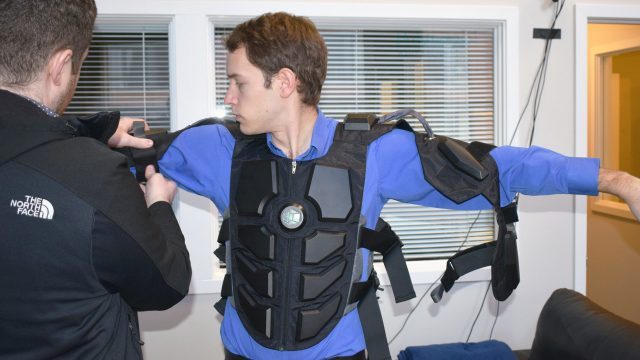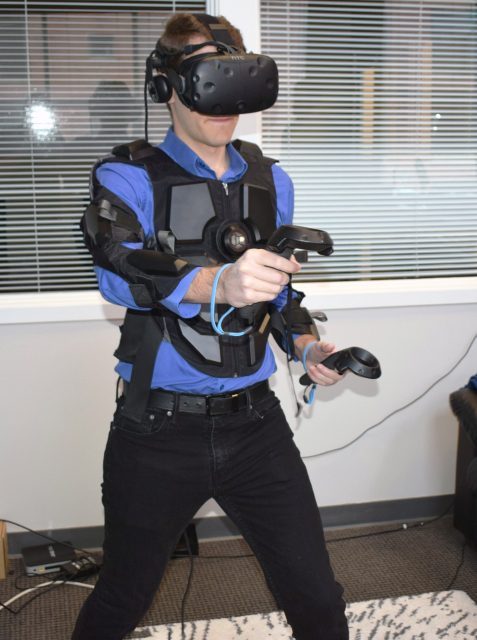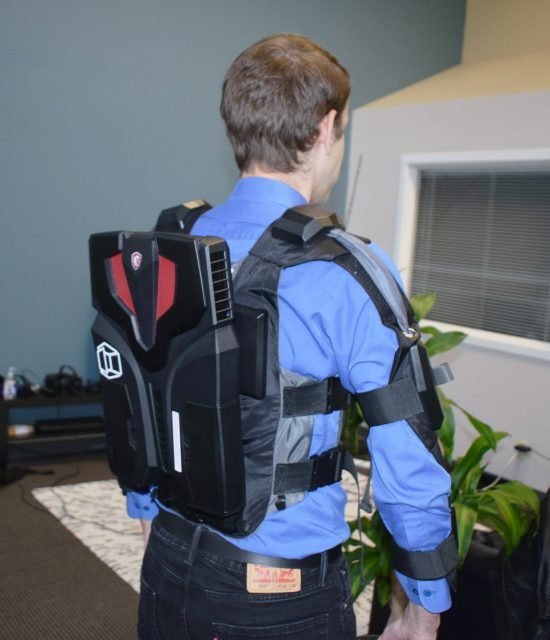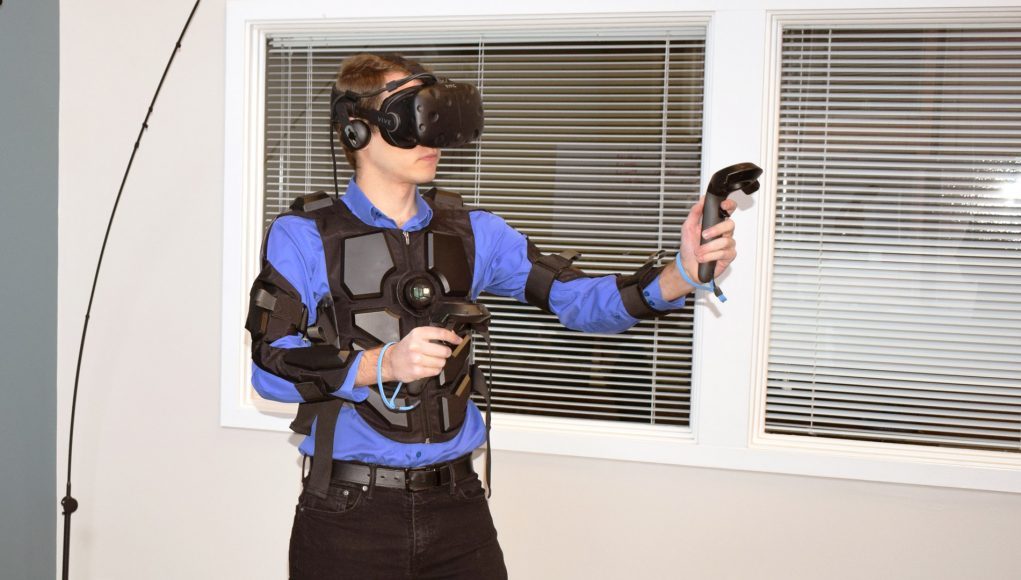Road to VR recently visited Hardlight VR’s downtown Seattle office to take a look at the new Mark III version of their haptic vest. During the visit, Hardlight VR revealed a dramatically lower price point of $300. This is down from the previous price of $630 for consumers and $1,100 for businesses. Now both consumers and businesses (like VR arcades) will pay the same, lower base price, but businesses will pay an additional monthly license fee of $10 (or $100 when paid yearly).
This new price point, which is even below their Kickstarter price—which raised close to $150,000 earlier this year—brings the VR accessory to a range now accessible for some consumers instead of just hardcore enthusiasts. The company’s Kickstarter video gives a good overview of the vest—though of course it can’t physically push you backwards as dramatized therein.

CEO Lucian Copeland says the lower price has been achieved because the company was “able to reach the production milestones that made this possible earlier than expected.” John Schork, Hardlight’s director of partnerships, said the team also felt the desire to keep pace with recent headset price cuts from both HTC and Oculus.
The company says they’ve begun delivering their vest to Kickstarter backers, and that pre-orders at the new, lower price are expected for delivery in March and April.
Using the Mark III

I got the chance to try out the latest vest while at the Hardlight VR office. While I did have some help putting on the vest, they pointed out that the straps are designed so that I could put it on myself. The straps also make the vest adjustable so that one size can fit different body types.

With the vest on, I jumped into Sairento VR (2016) for a quick demo. Feeling vibrations emminante down my arm every time I fired a revolver was very cool and definitely made the experience better.
Hardlight has been working with the developers behind Sairento and other VR games to directly control the vest’s 16 haptic units. I got a quick walkthrough of the tools that the developers would use to create vibration patterns and was told that some developers were able to add basic haptic feedback after only one day of work.
All of the electronics on the vest are removable, making it easier to clean without fear of damaging the components. The haptic motors are also attached to a series of inner plates that are designed to provide a tighter connection between the vest and the body. Hardlight also plans to sell an optional wireless module for $100 that fits on the lower back of the vest and provides power as well.
Torso & Arm Tracking
In addition to being a haptic vest, the Mark III comes with sensors that enable position and orientation tracking for a player’s arms and torso—something which can only be roughly estimated using head and hand tracking alone.
While I didn’t get to try this technology for myself, their demonstration video appears to show some pretty accurate tracking, particularly with the elbows. The difficulty of realistic elbow tracking is why today you often see many games with Rayman-style floating hands and games which ignore the player’s torso as a hitbox.
Backpack PC Compatibility

While the Hardlight vest was designed primarily for VR experiences, the team explained that it could also be used for more traditional audio and video experiences through the use of a pass-through audio port. The vest interprets the volume and frequencies of sound to produce an accompanying vibration throughout the vest, allowing it to double as a general-purpose rumble vest for traditional PC or console gaming. One Hardlight VR engineer has even created a “massage subroutine” for the system.
The team shared that they are working with backpack PC manufacturers like HP, MSI, and Zotac to make compatible adapters for their haptic vest, which would likely be attractive to customers interested in employing the vest in commercial settings. I got to try one of the prototypes: the weight felt well distributed and very sturdy, which is a must when you are swinging around an expensive backpack PC.
Vision for the Future

After demoing the Mark III vest, Hardlight VR founder and chief revenue officer, Morgan Sinko, took me to the company’s engineering lab where they’ve begun very early development on the next iteration of the haptics vest. In the lab, Morgan showed me a solenoid that he hoped would deliver “kick-my-ass haptics;” While typical vibration motors provide a rumbling and buzzing sensation, a solenoid could be used to deliver a single strong impulse, closer to the feeling of an actual impact. He described using the solenoid side-by-side with the existing vibration motors but having them each activate for different sensation patterns.
After our discussion about solenoids, Morgan then pulled out a thermoelectric cooling and heating plate. He placed it in my hand to demonstrate how quickly the off-the-shelf component could heat up or cool down. Morgan envisions a future version of the vest containing a matrix of these plates placed throughout the vest so that developers could add a sense of temperature to their VR experiences. One of the current challenges, he said, is safety, because when used at full power, these components could actually cause burns or frostbite.
Throughout the discussion about future plans, Morgan also stressed that Hardlight is committed to continuing support for all of the current vest in use today. He also mentioned the need for future versions of the vest to be compatible with their existing SDK and software produced by Hardlight’s partners. Hardlight VR claims to have 27 software partners with some additional big name games coming soon.







